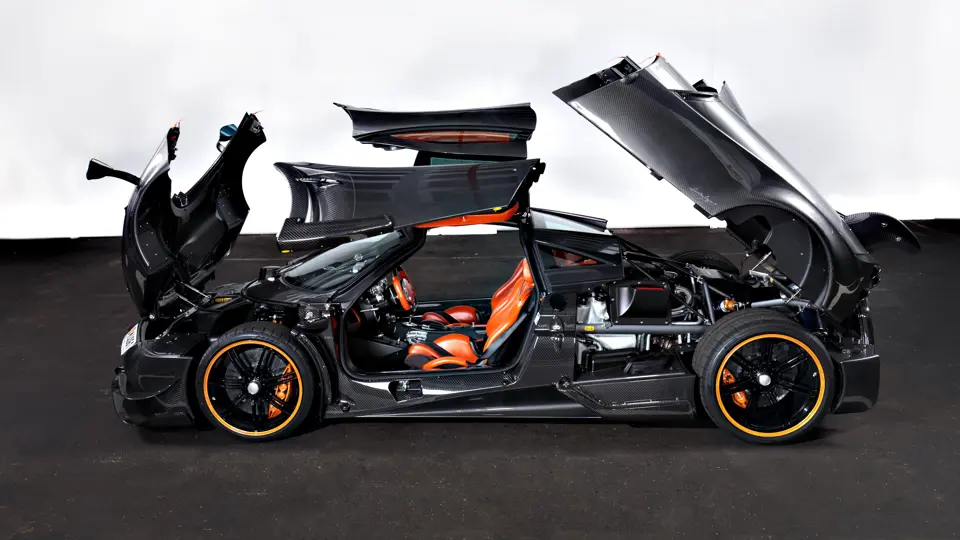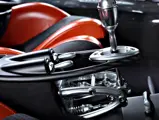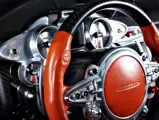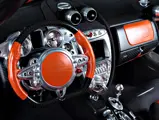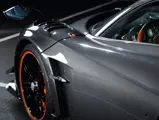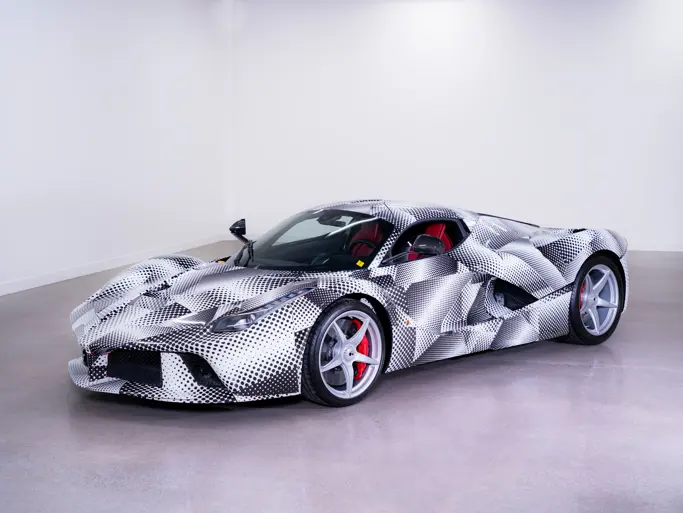
2017 Pagani Huayra BC Coupé
{{lr.item.text}}
$4,336,250 USD | Sold
{{bidding.lot.reserveStatusFormatted}}
- One of approximately 20 examples built of the track-focused Huayra BC
- Named in honour of Benny Caiola, the first customer to purchase a Pagani
- Subsequently upgraded to specification reflective of the ‘Pacchetto Tempesta’ development, improving aerodynamics, new suspension, and increased engine performance
- Lacquered, bare carbon fibre bodywork featuring orange accents accompanies an orange leather interior complete with black Alcantara and carbon fibre trim
- Powered by a twin-turbocharged, 6-litre V-12 from AMG that delivers 827 horsepower to the rear wheels via a seven-speed, paddle-operated transmission
Horacio Pagani has long been an innovator. The Argentine-Italian engineer can be credited with restyling the Lamborghini Countach to create the striking 25th Anniversary edition. He was also a driving force behind the marque experimenting with composite technology. While Kevlar and carbon fibre-reinforced panels would ultimately make their way onto production cars, the pioneering, lightweight Countach Evoluzione sadly remained a one-off prototype. With his request for the company to purchase an autoclave turned down, Horacio had the motivation to establish Pagani Automobili in his own image.
The first model devised, the Zonda, was adored throughout its many evolutions. However, in keeping with his forward-thinking approach, Mr Pagani had already turned his attention to conceiving its successor as early as 2003. Codenamed the “C9”, it was a clean-sheet design that embraced aerodynamic efficiency to result in a sleek and soft silhouette. Among the most distinctive features, four active flaps—two at the front, two more at the rear—that were managed by a dedicated control unit to continually adjust to provide optimum downforce. Given this manipulation of the air, the car would be appropriately christened ‘Huayra’ in deference to Wayra Tata, the Quechua wind god.
Underlining why the pair were a perfect match, Pagani’s engine partner, Mercedes-AMG, was similarly ahead of the curve. With the new hypercar came a new powerplant in the form of a lightweight, twin-turbocharged V-12 displacing 5,980 cc. As forthcoming emissions restrictions dictated a move away from natural aspiration, Affalterbach’s finest were intent on crafting an engine that still felt linear and banished notions of lag to maximise drivability.
The track-only Zonda R would prove something of a rolling testbed for developments to the Huayra, which paved the way for the introduction of the more aggressive BC. Unveiled at the Geneva Motor Show in 2016, here was a personal tribute to Benny Caiola, an early investor in Pagani and the company’s first-ever customer. The BC gained an extra 20 horsepower to take the total to 753, which was transmitted to the rear wheels only via a single-clutch, paddle-operated, seven-speed sequential manual transmission.
Despite the use of composites throughout the ‘standard’ car, a staggering weight saving of more than 130 kilograms was still achieved for the BC thanks to the development of a new “Carbo-Triax” material that was reportedly 50 per cent lighter and 20 per stiffer than conventional carbon fibre. A new titanium exhaust system, pared-back interior, and alloy wheel redesign further aided the diet. Meanwhile, the BC gained a prominent fixed rear wing and more aggressive front splitter.
Pagani stated that just 20 examples of the BC would be built at its San Cesario sul Panaro, Italy headquarters. Of those, chassis 76130 offered here is believed to be the 11th car constructed. It was completed in 2017 before being registered in Andorra by its sole owner in August that year. Proudly showcasing the materials that Mr Pagani had developed for so long, this car’s bodywork is presented in clear, lacquered, bare carbon fibre and capped off with bright orange accents, including for the brake callipers. This Huayra was subsequently treated to maintenance by Pagani in August 2019, at which point it was recorded as having covered 1,550 kilometres.
Then, during the 2021 edition of the Monterey Car Week, Pagani unveiled the ‘Pacchetto Tempesta’ for the BC. This new package further enhanced the Huayra’s on-track credentials in the form of a new front splitter with a dedicated air intake, plus a reprofiled rear wing featuring a prominent central fin. A six-pipe exhaust system was equipped in addition to new suspension, while an optimised powertrain brought the total output to some 827 horsepower.
An even higher performance ceiling having been unlocked for the Huayra BC, chassis 76130 returned to the factory to be upgraded to ‘Pacchetto Tempesta’ specification, which the car retains today. Please note, this car’s appearance now differs slightly from its catalogue photography. The more aggressive exterior is complemented by the matching interior. The leather seat pads, steering wheel accents, and stitching are also presented in orange, while black Alcantara and carbon fibre trim accompany the aluminium fascia, air vents, dials, and artisan exposed gear linkage.
Very seldom is a Huayra BC publicly offered for sale, given the model’s incredible rarity. The example presented here is that much more exclusive and desirable, courtesy of gaining the ‘Pachetto Tempesto’ upgrades. A truly exquisite creation, the opportunity to acquire chassis 76130 is not to be missed.



















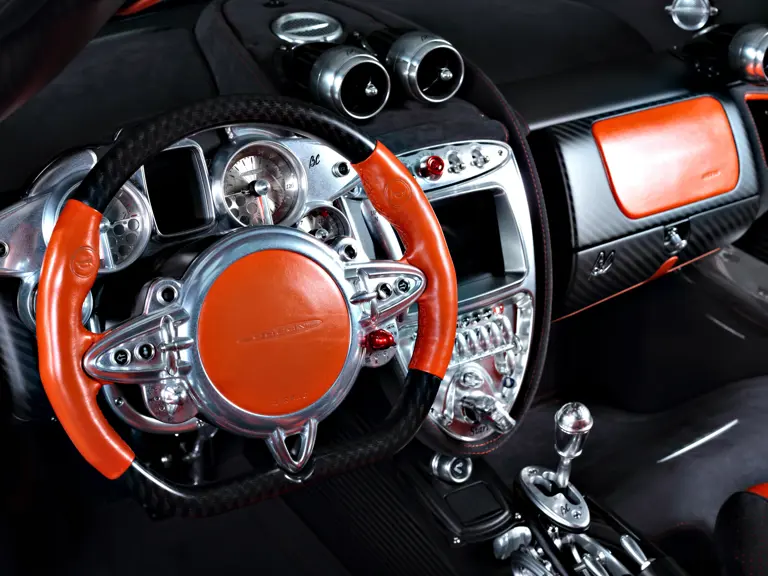

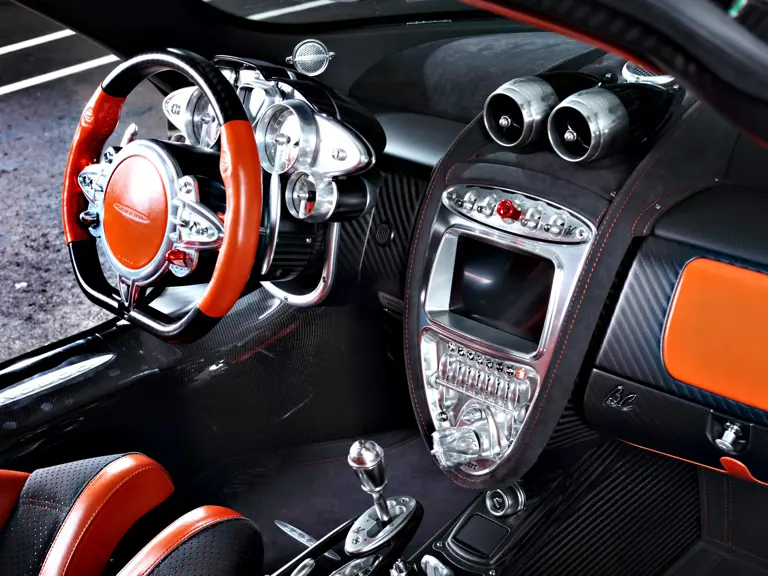


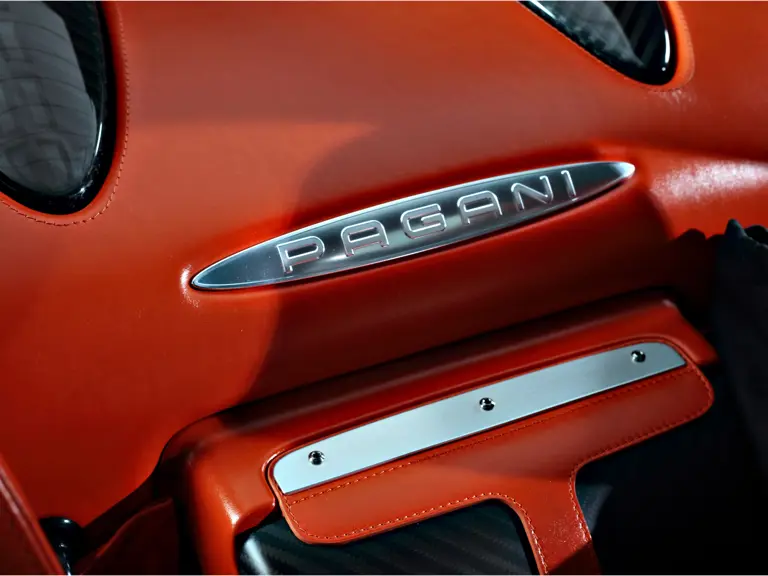



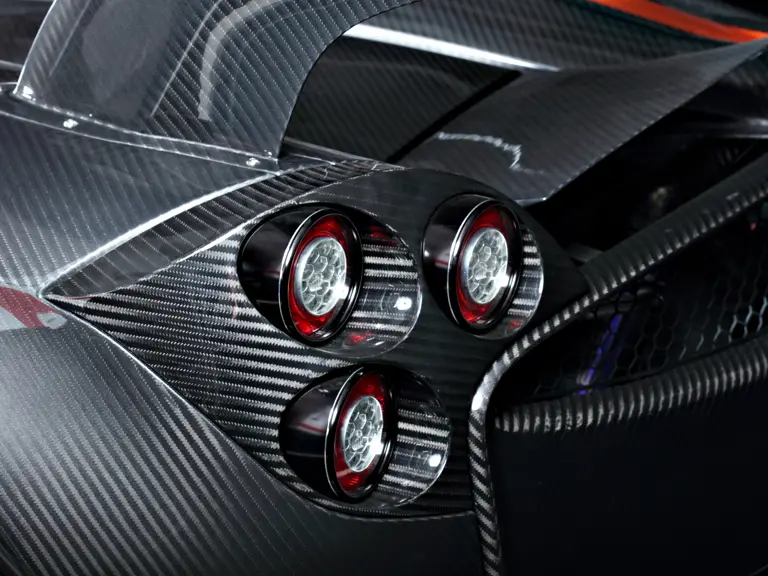












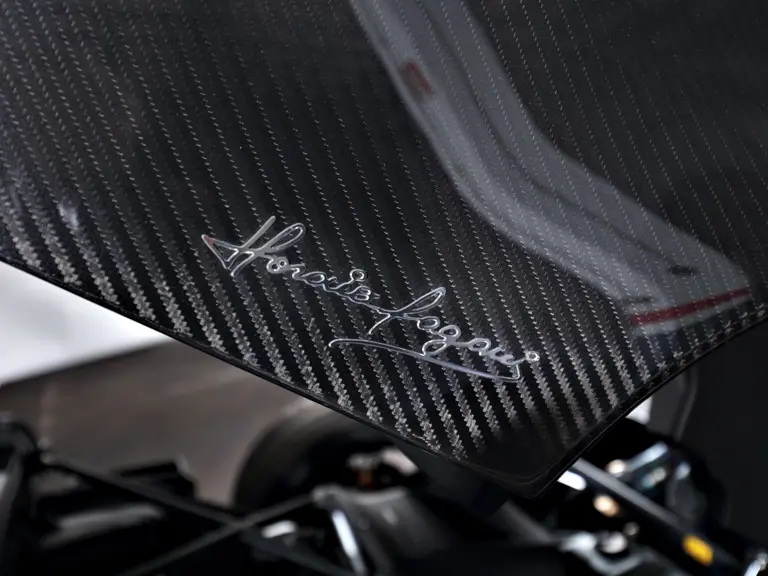


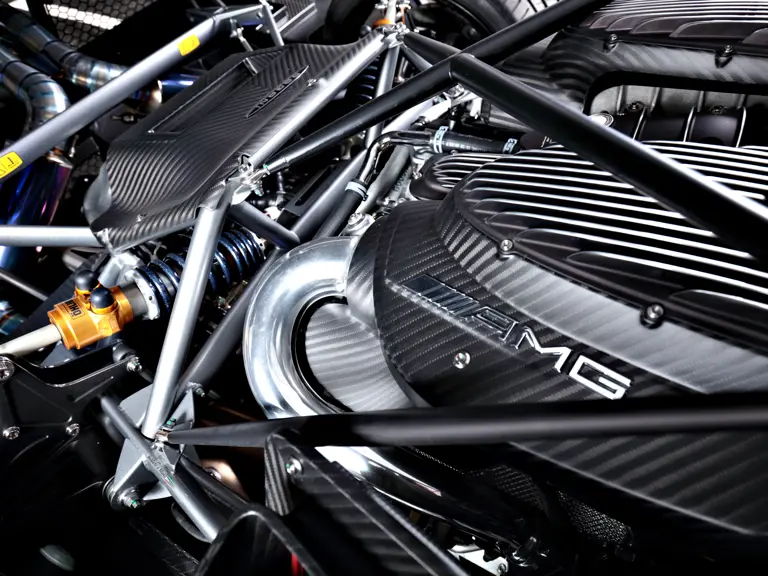


 | Dubai, United Arab Emirates
| Dubai, United Arab Emirates


